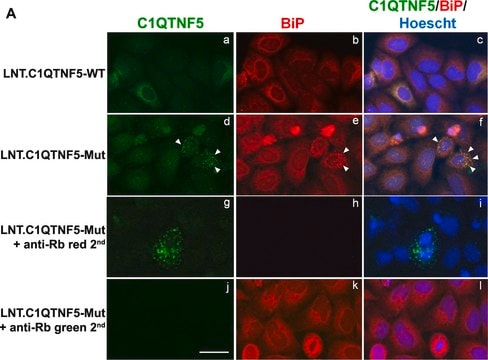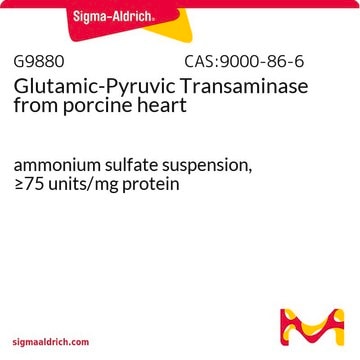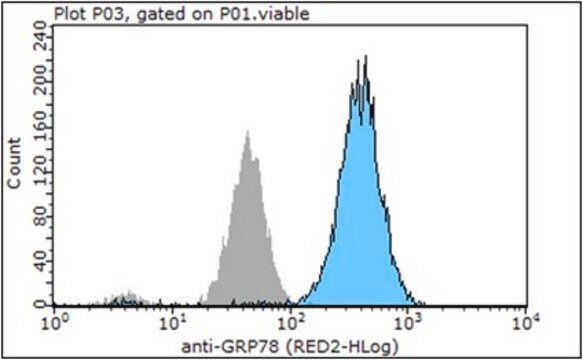G9043
Anti-GRP78/BiP (ET-21) antibody produced in rabbit

IgG fraction of antiserum, buffered aqueous solution
Synonym(e):
Anti-78-kDa Glucose-Regulating Protein, Anti-Immunoglobulin Heavy Chain Binding Protein
About This Item
Empfohlene Produkte
Biologische Quelle
rabbit
Konjugat
unconjugated
Antikörperform
IgG fraction of antiserum
Antikörper-Produkttyp
primary antibodies
Klon
polyclonal
Form
buffered aqueous solution
Mol-Gew.
antigen 78 kDa
Speziesreaktivität
mouse, chicken, Xenopus, hamster, human, rat
Erweiterte Validierung
independent
Learn more about Antibody Enhanced Validation
Methode(n)
immunocytochemistry: 1:1,000 using methanol/acetone fixed cultured mouse fibroblast NIH3T3 cell line
immunohistochemistry: 1:1,000 using human cerebral cortex and human thyroid gland tissue sections
western blot: 1:3,000 using whole cell extract of human epitheloid carcinoma HeLa cell line
UniProt-Hinterlegungsnummer
Versandbedingung
dry ice
Lagertemp.
−20°C
Posttranslationale Modifikation Target
unmodified
Angaben zum Gen
human ... HSPA5(3309)
mouse ... Hspa5(14828)
rat ... Hspa5(25617)
Verwandte Kategorien
Anwendung
- for immunofluorescence staining of frozen heart tissue to examine whether ER stress signaling activation occurs in cardiomyocytes
- for immunohistochemistry on Paraffin embedded sections of human cerebral cortex and human thyroid gland tissue sections.
- to detect Bip by immunoblotting of protein extract from WT AB strain of zebrafish (Danio rerio)
- at a working dilution of 1:1000 to detect GRP78 in extract of prostate cancer cells after androgen deprivation therapy
Biochem./physiol. Wirkung
Physikalische Form
Haftungsausschluss
Not finding the right product?
Try our Produkt-Auswahlhilfe.
Lagerklassenschlüssel
12 - Non Combustible Liquids
WGK
nwg
Flammpunkt (°F)
Not applicable
Flammpunkt (°C)
Not applicable
Analysenzertifikate (COA)
Suchen Sie nach Analysenzertifikate (COA), indem Sie die Lot-/Chargennummer des Produkts eingeben. Lot- und Chargennummern sind auf dem Produktetikett hinter den Wörtern ‘Lot’ oder ‘Batch’ (Lot oder Charge) zu finden.
Besitzen Sie dieses Produkt bereits?
In der Dokumentenbibliothek finden Sie die Dokumentation zu den Produkten, die Sie kürzlich erworben haben.
Artikel
Centrifugation separates organelles based on size, shape, and density, facilitating subcellular fractionation across various samples.
Unser Team von Wissenschaftlern verfügt über Erfahrung in allen Forschungsbereichen einschließlich Life Science, Materialwissenschaften, chemischer Synthese, Chromatographie, Analytik und vielen mehr..
Setzen Sie sich mit dem technischen Dienst in Verbindung.








